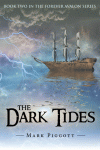![avalon_by_iribel[166]](https://authormarkpiggott.files.wordpress.com/2017/03/avalon_by_iribel166.jpg?w=390&h=523) Why Avalon? Why indeed … I’ve been asked this question many times. Why did I choose Avalon, Camelot, Merlin, King Arthur and the whole Arthurian legend as the basis for my novels in the Forever Avalon series?
Why Avalon? Why indeed … I’ve been asked this question many times. Why did I choose Avalon, Camelot, Merlin, King Arthur and the whole Arthurian legend as the basis for my novels in the Forever Avalon series?
I am not the first, nor nowhere near the best, at interpreting the Arthurian legend for my prose. From myth to legend, reality to fantasy, Avalon will always be considered a place of magic. When you think of games like Dungeons & Dragons, you can’t help but think of Excalibur, wizards, dragons and other aspects from the many myths and legends we associate with Avalon.
Avalon, Ynys Avallach, the Island of Apples … These are all part of the legend of Avalon. It is an island where the pagan god Avalloc sired nine sisters with mystical powers, including Morgen (better known as Morgana le Fay). It is where Excalibur was forged, the home of the Lady of the Lake, a place where all things are provided.
I’m rather fond of the Celtic mythos, that Avalon is an island of magic that exists out of time and space. The Celts believed in the Otherworld, and for them, Avalon represented the land of the mythical and mystical. It existed outside of the normal world but was accessible from it. Time moved at a different pace and islands were specifically associated with being gateways into the Otherworld. Sound familiar? It should as that is what I based Avalon in the Forever Avalon series on.
In fact, most of the islands off the coasts of Britain were known as Isles of the Dead to the early Celts: Lundy, the Isle of Man, the Scilly Isles, have all been associated with being the real life location for Avalon. So is Glastonbury, where at one time, the large earthen mound known as Glastonbury Tor was considered an island as it was once surrounded by marshland.
The association of Glastonbury with Avalon and the Arthurian legends came about in a curious way. In 1190, enterprising monks at Glastonbury Abbey claimed to have discovered the grave and bones of King Arthur and Queen Guinevere. The discovery of the burial occurred when the new abbot of Glastonbury, Henry de Sully, commissioned a search of the abbey grounds shortly after the reign of King Henry II. At a depth of five meters (about 16 feet) the monks discovered a massive tree trunk coffin and a leaden cross bearing the inscription, “Hic jacet sepultus inclitus rex Arthurus in insula Avalonia” (“Here lies renowned King Arthur in the island of Avalon”).
There was even a formal burial service held at Glastonbury Abbey, attended by King Edward I. Glastonbury was also heavily associated with early Christianity, adding to its ties to the Arthurian legends. Joseph of Arimathea was said to have brought not only the Holy Grail to Glastonbury, but is also responsible for a sacred tree that still grows there today. Legend has it that as he set foot on Wearyall Hill just below the Tor and, in his exhausted state, thrust his staff into the ground and then rested. By morning, his staff had taken root, and turned into a strange oriental thorn bush which is now known as the Glastonbury Thorn.
Even the tower atop Glastonbury Tor is steeped in mythology as it is said to be the entrance to the underworld. All of these have, in one way or another, tied Glastonbury with Avalon. Its moments like this that has truly ingrained the legend of Avalon in our world history.
***

 Mark Piggott is the author of the Forever Avalon book series. Forever Avalon is available for purchase at Amazon and Barnes and Noble. The Dark Tides is available for purchase at Amazon, Barnes and Noble, and iUniverse. The Outlander War can be previewed at Inkitt.
Mark Piggott is the author of the Forever Avalon book series. Forever Avalon is available for purchase at Amazon and Barnes and Noble. The Dark Tides is available for purchase at Amazon, Barnes and Noble, and iUniverse. The Outlander War can be previewed at Inkitt.
